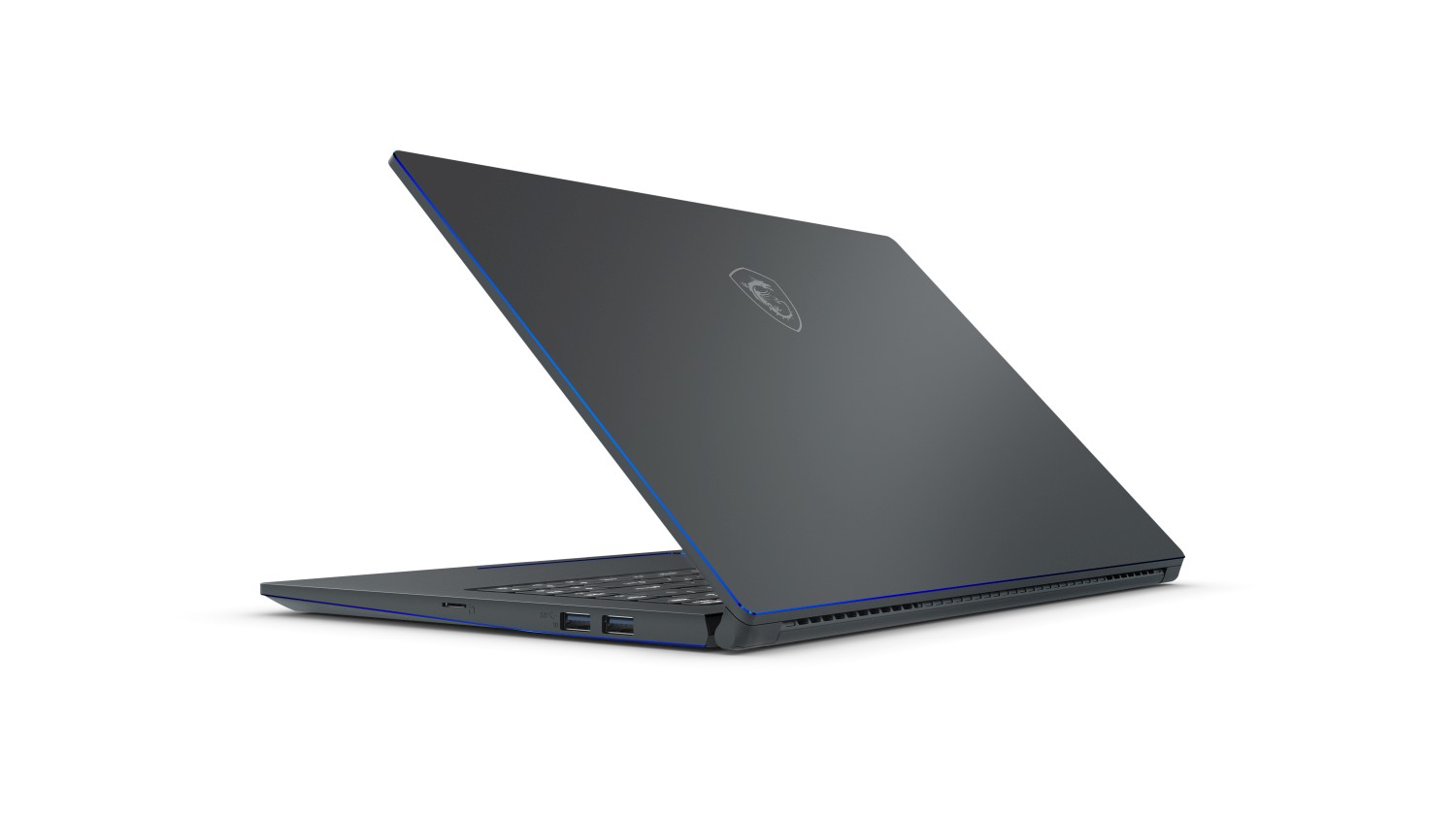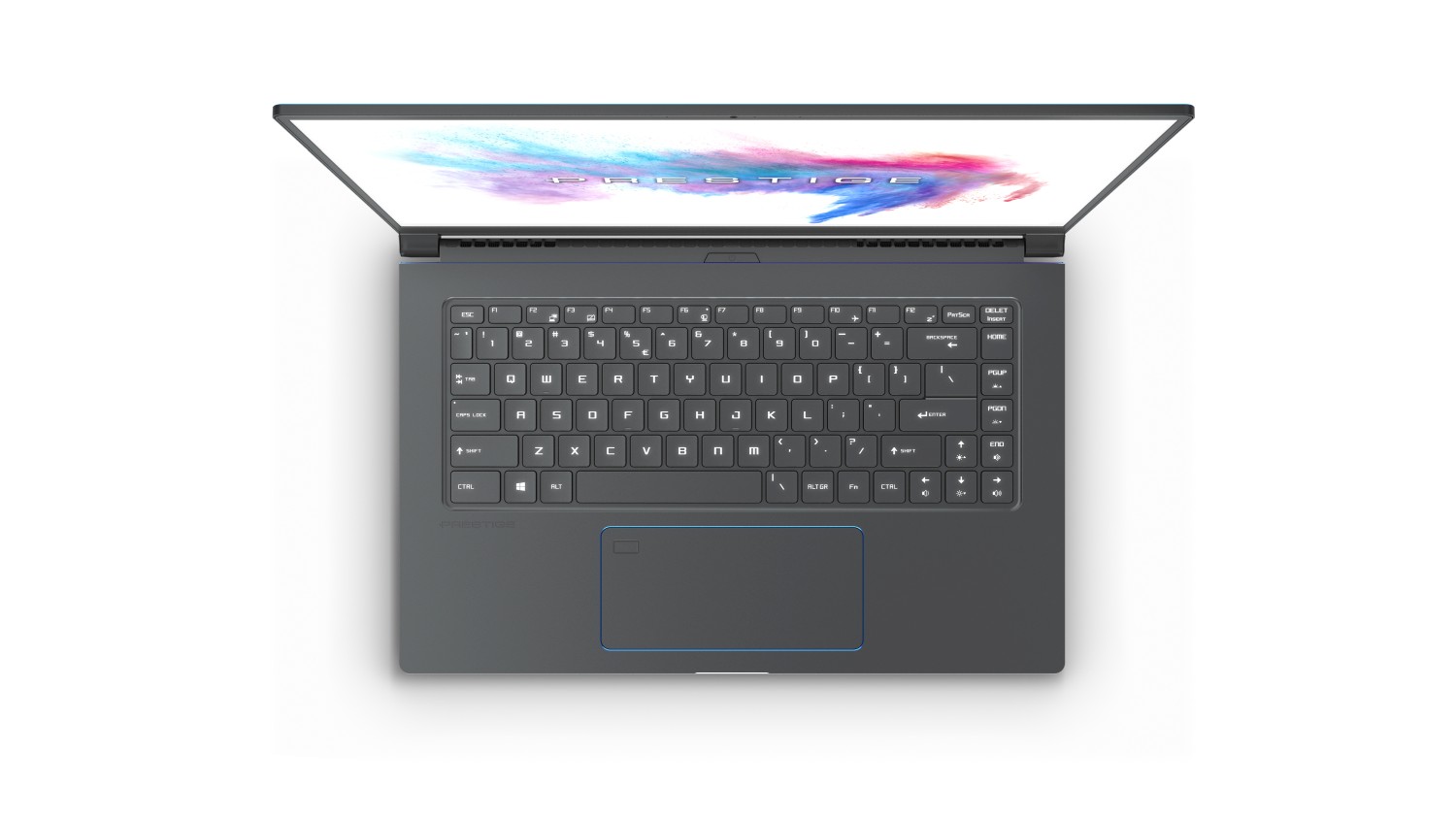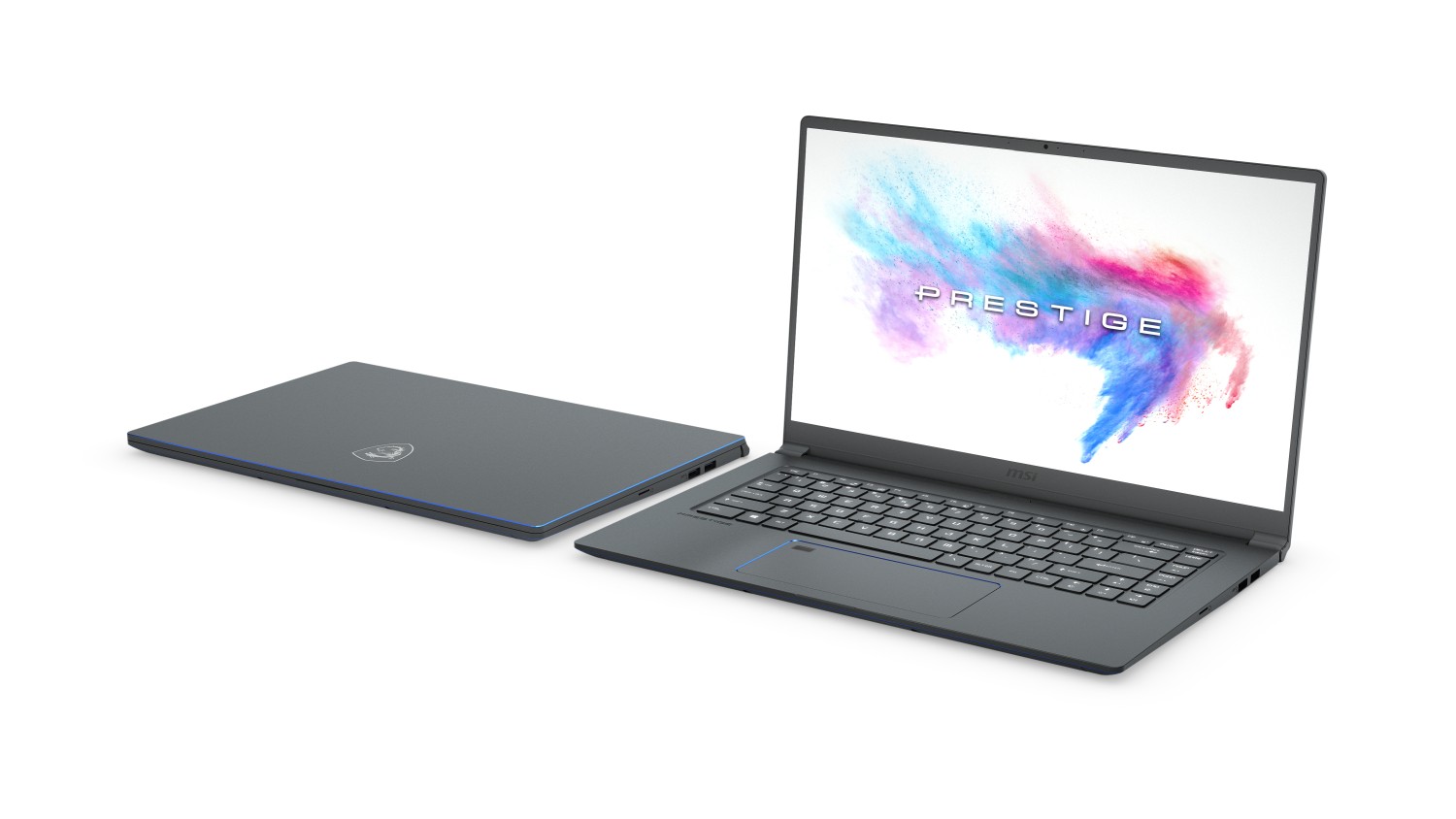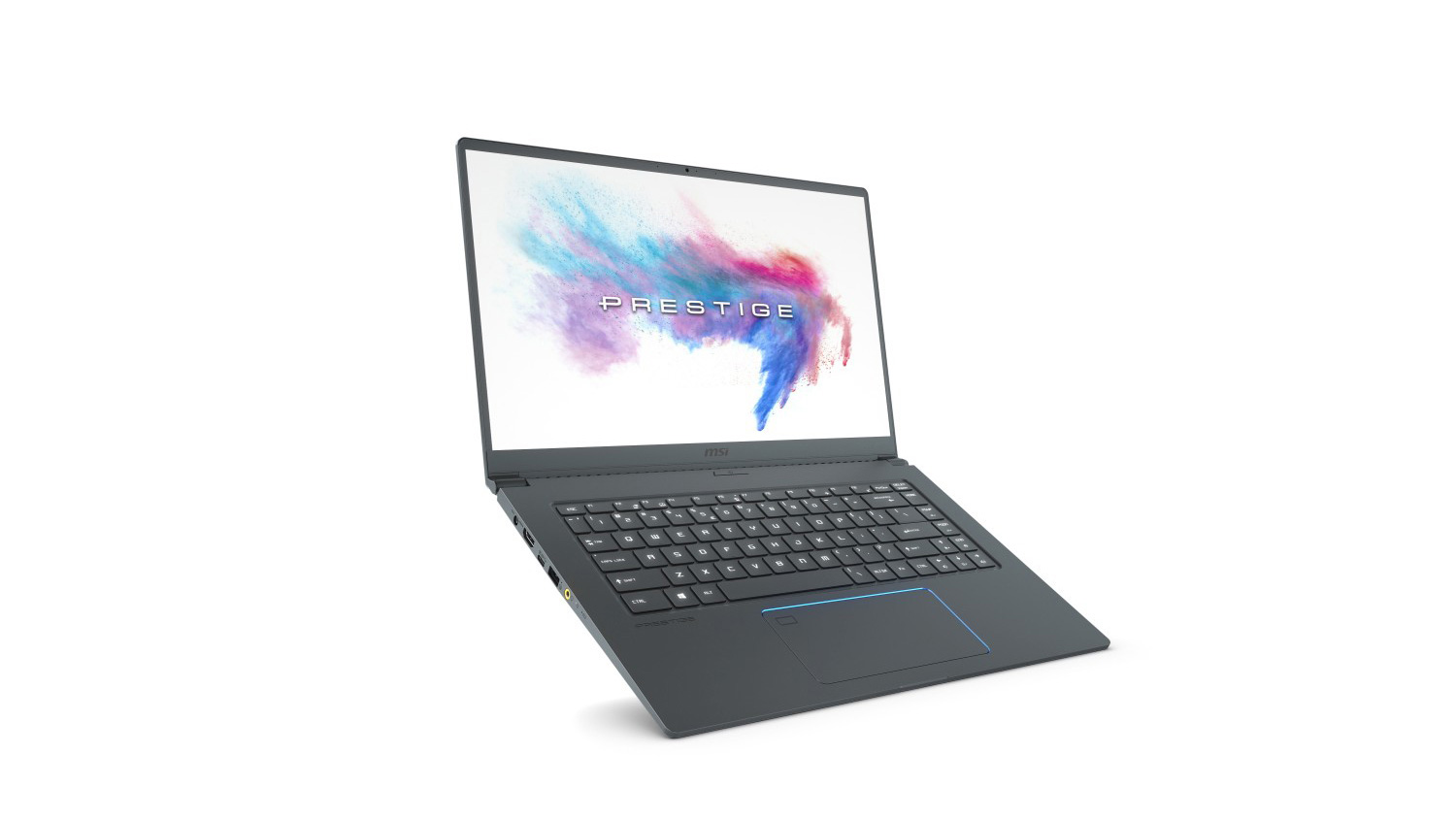Our Verdict
The low-power Core i7 chip delivers fantastic battery life and solid mainstream performance, and MSI provides good ergonomics and design throughout. Other machines have more power, though, and screen quality is only average – both of which restrict the appeal for designers.
For
- Fantastic battery life
- Slim, attractive design
- Solid performance
Against
- Other Core i7 chips are quicker
- Middling screen quality
- Soft keyboard
Why you can trust Creative Bloq
The PS63 Modern may be a work laptop, but it comes from an unusual source – because MSI is better-known for building high-octane gaming machines. Think about it, though, and it actually makes plenty of sense. Gaming laptops tend to have good design, powerful graphics cores and solid build quality, and they’re all attributes that are useful for work machines too – especially if you work as a designer.
Can it justify its $1,499/£1,499 price tag when up against strong competition from Dell and Apple, though?
MSI PS63 Modern: Design
The PS63 Modern comes from MSI’s Prestige range, and it looks good without channelling the more extravagant design associated with gaming laptops. The machine is hewn from aluminium that has been diamond-cut and sandblasted, so the material is precise, smart and subtle. The edges are finished with a glistening blue trim, which adds a little sheen.
The good looks are backed up with solid practicality. On the right-hand side you’ll find two USB 3.1 ports and a microSD card reader, and on the left there’s an HDMI output, another full-size USB port and a USB Type-C connection that support DisplayPort.
Good looks are backed up with solid practicality
The full-size USB port on the left-hand side uses a Qualcomm technology called QC 3.0, which pumps extra electricity through the port to accelerate phone charging. One of the other USB ports uses the USB 3.1 Gen 2 protocol, which improves data transfer speeds. The one thing missing is a Gigabit Ethernet port. MSI does include an adapter, but it occupies a USB slot.
The MSI weighs 1.6kg and is 16mm thick – great dimensions for a 15.6in laptop. Build quality is reasonable, with only a little flex in the screen and no movement in the base. The PS63 also meets several MIL-STD 810G standards, so it’s ready to work in high and low temperature environments, extreme humidity and after being dropped. We’d still use a sleeve or a case to protect the exterior, but this machine is certainly sturdy enough for use outside of the office.




It looks just as good as machines like the Dell XPS 15 or the Apple MacBook Pro, and the dimensions compete well – the Dell and Apple machines are a little heavier, while the Microsoft Surface Book 2 also proves heftier if you choose its Core i7 version. Dell’s machine has one fewer USB port but it does have Thunderbolt. Apple’s machine now uses Thunderbolt exclusively.
Daily design news, reviews, how-tos and more, as picked by the editors.
Elsewhere, the MSI comes with a tiny power adapter – which will make life a little easier for designers on the go.
MSI PS63 Modern: Creator Centre
The PS63 comes with an app called Creator Centre. Its key feature is compatibility with more than a dozen creative apps, including movie, music and photo editing tools from MAGIX, VEGAS, Corel and Adobe. If they’re installed, MSI’s tool will modify clock speeds and prioritise processes in order to improve performance.
Elsewhere, Creator Centre monitors system usage, temperatures and fan speeds, and can be used to choose screen modes. It also switches the PS63 from its default Balanced mode to its High Performance and Silent options – which, in turn, alter the system and fan speeds. However, those three modes barely influence performance, so they can safely be ignored.
However, Super Battery mode drops the MSI’s Geekbench scores to 1,559 and 3,890. With this option enabled you’ll only be able to run very basic applications.
MSI PS63 Modern: Battery life
The battery itself is far more impressive. In a web-browsing and word-processing test with the screen at full brightness the PS63 lasted for a mighty 12 hours and 34 minutes. In a trickier work test, with more demanding applications and the screen at full brightness, the MSI lasted for 5 hours and 41 minutes.
In Super Battery mode – albeit with the PC’s performance strangled and the screen at a dim 20% brightness – the MSI lasted for 18 hours. That’s a fantastic result. Despite the limitations of the Super Battery mode, it’s a superb bill of health for the PS63’s battery.
The Dell runs for eight hours at a light load, but only three hours in demanding applications. The MacBook Pro lasts just shy of 10 hours during light testing, while the Microsoft Surface Pro runs for at least 12 hours.
You’ll easily coax this machine through a full day unplugged, unless you intend to push the components to their limit. The MSI will always last longer than machines with H-branded CPUs. The MSI’s low-power CPU also had an impressive impact in thermal benchmarks. Its CPU and GPU temperatures were fine, and the exterior was never too warm.
Impressively, the MSI was near-silent during CPU tests – we only barely detected fan noise with our ears up to the chassis. A full-system test saw the fans produce a little more noise, but it was still almost impossible to hear unless you’re up-close. You’ll essentially never hear this machine make any noise. Dell’s XPS 15 machines and the Apple MacBook 15 are louder, especially when working.
MSI PS63 Modern: Display
The PS63’s display is a 1080p IPS panel with a pleasingly slim 5.6mm bezel. That resolution is fine for day-to-day work, although the Apple and Dell are crisper – the former runs at 2,880 x 1,800, while the latter includes 4K screens in pricier models.
By default, the MSI uses its sRGB mode – and this is the best option when it comes to screen quality. In this mode the PS63 delivers a superb colour temperature of 6,539K, which means that colours don’t look too chilly or too over-saturated. The brightness level of 253cd/m2 is mediocre, and the black level of 0.24cd/m2 is good – which means a contrast ratio of 1,054:1. The decent contrast means that colours will look punchy, and the black level creates good depth.

The middling brightness level is fine for the office, but it’ll struggle outdoors. The Delta E of 2.42 should be below 2 to produce truly excellent colours. Uniformity is mediocre, with brightness deviations of up to 11% in some corners.
And, talking of colours, the screen doesn’t render any gamuts completely. The MSI can handle 86.3% of the sRGB colour gamut – a middling result, but fine for mainstream creative and photography tasks.
However, the panel only handled 67% of the DCI P3 gamut and 63% of the Adobe RGB gamut. The former figure rules out HDR content creation, while the latter figure means the PS63 won’t handle design work that requires full Adobe compatibility.
We wouldn’t use the screen modes, either. The Designer option makes the panel darker and a tiny bit more over-saturated, while the Office option has a blue pall. The Gamer and Movie modes worsen colour quality.
The PS63’s panel has that solid contrast and colour temperature, and its default Delta E isn’t terrible – so it’s fine for day-to-day work, from photo editing to other creative tasks. However, it can’t handle professional gamuts and its colour accuracy and brightness could be better. This means it’s not suitable for demanding work. The Dell and Apple machines are better options for those situations.
MSI PS63 Modern: Ergonomics
The MSI has a conventional chiclet keyboard with shallow, speedy keys. The buttons are soft, consistent and responsive – comfortable and fast enough for hammering through documents from morning until evening.

However, the buttons don’t have much travel or physical response. They may be comfortable, but they don’t have the crisp, snap action of a Dell or an Apple keyboard. This unit is fine for typing for long periods, but personal preference comes into play. If you prefer something more tactile, another keyboard will prove more satisfying.
The touchpad is excellent. It’s made of glass and is wider than anything you’ll find on the competition. The surface is smooth and responsive and supports multi-touch. It’s also got a fingerprint reader. The buttons themselves could have a slightly firmer action, but that’s a minor complaint that won’t affect day-to-day use.
MSI PS63 Modern: Specification
The MSI’s Core i7-8565U is a new Intel Whiskey Lake chip, which means a refinement of the Coffee Lake architecture with better Turbo speeds and fixes for the familiar Meltdown and Spectre security vulnerabilities. The Core i7’s ‘U’ suffix means that this is a low-power chip. True to form, it consumes just 15W – a third of conventional H-branded mobile parts.
While that bodes well for efficiency, it does mean the specification is hindered. This chip has four Hyper-Threaded cores, but that’s two fewer than Intel’s normal mobile Core i7 parts – like the i7-8750H that’s used in both the Dell and Apple laptops.
The i7-8565U runs at 1.8GHz and has an all-core Turbo peak of 4.1GHz, with a one-core Turbo peak of 4.6GHz. Those Turbo speeds are better than the i7-8750H, but that CPU has a better stock speed of 2.2GHz – and that extra speed, and its extra cores, will come into play more during day-to-day use.
The CPU is paired with 16GB of memory, although it’s installed in single-channel configuration – so it won’t be as effective as dual-channel RAM. Windows 10 Home sits on a 512GB Western Digital SN520 NVMe SSD.

The low-power processor is paired with an Nvidia GeForce GTX 1050. It’s a mid-range chip from 2018’s Nvidia range, and MSI has chosen to use the card’s Max-Q version – which means that its clock speeds have been reduced in order to improve efficiency.
This is where the machine differs, depending on where you buy. UK models of this machine have the GTX 1050. However, American buyers can opt for a slightly pricier model with the GTX 1050 Ti Max-Q, which has a few more stream processors and slightly better clock speeds. Dell’s machine has the GTX 1050 Ti, while Apple’s laptops make do with AMD Radeon chips that will not be as fast as the Nvidia hardware.
Elsewhere, you get dual-band 802.11ac wireless, Bluetooth 5.0 and TPM 2.0. The machine is powered by a sizeable 82Wh battery that MSI claims will last 16 hours. The Surface Book 2 is available with the same U-branded CPUs as the MSI and similar Nvidia graphics hardware.
MSI PS63 Modern: Performance
The MSI rattled through Geekbench to single- and multi-core results of 4,634 and 12,118. That’s fine, and roughly level with the Surface Book 2. The single-core score isn’t far behind the Dell and Apple machines – because low-power chips still have good single-threaded speed.
However, the MSI’s reduced cores and less aggressive Turbo abilities saw it fall behind its six-core rivals by around 10,000 points in the multi-core test. The MSI’s lack of multi-threaded ability hampered it in Cinebench, too. Its score of 563cb is around half the pace of machines with the Core i7-8750H.
Real-world tests further illustrate the gap between the low-power MSI and its rivals. In a GIMP single-threaded image editing test the MSI’s score of 44,045 was barely any different to machines with H-branded CPUs – but in the Handbrake video encoding test, which requires multi-threaded power, the MSI only scored 169,905 points. Machines with the i7-8750H score beyond 300,000 points in that test.
If you’re running Office applications, image editing tools and other software that relies on single-threaded speed, the PS63 will be excellent
If you’re running Office applications, image editing tools and other software that relies on single-threaded speed, the PS63 will be excellent. It’ll zip through without breaking a sweat – ideal if you do a lot of work with spreadsheets or word processors, or mainstream photo work.
The MSI will handle mainstream multi-tasking without problems – if you’re running normal work tools, entry-level video utilities or web browsers with lots of tabs, it’ll be fine. The SSD’s speeds of 1,743MB/s and 1,455MB/s are good – mid-range for an NVMe drive, and enough to ensure that the PS63 always feels responsive.
However, if you want to do high-end design work or run demanding video, database or creativity tools, then you will get better results by using the six-core, full-power i7 processors inside the Dell or Apple laptops.
The GTX 1050 Max-Q lends the MSI extra graphical ability, and that will help with photo editing, video work and creative tools. However, its key rivals have similar chipsets, so this isn’t an area where the PS63 can necessarily pull ahead.
The MSI scored 5,600 points in the 3D Mark Fire Strike graphics test. That’s solid – and far better than Intel’s integrated graphics – but it’s 1,200 points behind laptops that pair the same GPU with an H-branded CPU. Expect the GTX 1050 Ti models to score 6,100 points in that test – around 700 points behind H-branded machines.
Different Models
The two models of MSI PS63 available in the US have GTX 1050 Ti and GTX 1050 GPUs, and the former machine also has a 1TB SSD – twice as large as the SSD in the latter laptop. In the US, the GTX 1050 Ti machine costs $1,599, with the GTX 1050 machine costing $1,499. In the UK, both models have the GTX 1050. The cheaper version, at £1,399, includes a 256GB SSD. The pricier £1,499 model has a 512GB SSD. In all other departments, all the machines have the same specifications and warranties.
MSI PS63 Modern: Verdict
The MSI PS63 has plenty going for it, but the inevitable comparisons to its competition from Dell and Apple highlight as many weaknesses as strengths. The low-power processor helps the MSI deliver better battery life than any rival. It also means that it’s whisper-quiet in all situations. Elsewhere, you get great build quality, impressive dimensions and solid ergonomics.
The GPU, storage and memory are all fine, and the MSI can handle mainstream tasks: Office applications, mainstream photo and video tools and plenty of other day-to-day work utilities will run without a problem. However, the Dell and Apple machines are better when it comes to high-end work and creative tools – and multi-tasking.
Similarly, the screen is acceptable for mainstream work, but it doesn’t have quality of Dell and Apple’s screens. Those panels are better for tasks where colour accuracy is paramount.
It may not be a powerhouse like the Dell XPS or Apple machines, then, but it’s still fast enough for many mainstream work and media tasks – and it delivers far better battery life. If longevity is more important than pure computing ability, the MSI PS63 Modern is an impressive alternative.
out of 10
The low-power Core i7 chip delivers fantastic battery life and solid mainstream performance, and MSI provides good ergonomics and design throughout. Other machines have more power, though, and screen quality is only average – both of which restrict the appeal for designers.

Mike is a freelance journalist who has been writing professionally about technology since 2007. His articles have appeared in Tech Radar, Wired, PC Advisor, IT Pro, Custom PC, The Inquirer, Stuff and many more. He specialises in reviewing computer systems and testing the latest computer accessories, and he has a thorough level of expertise in consumer electronics.

